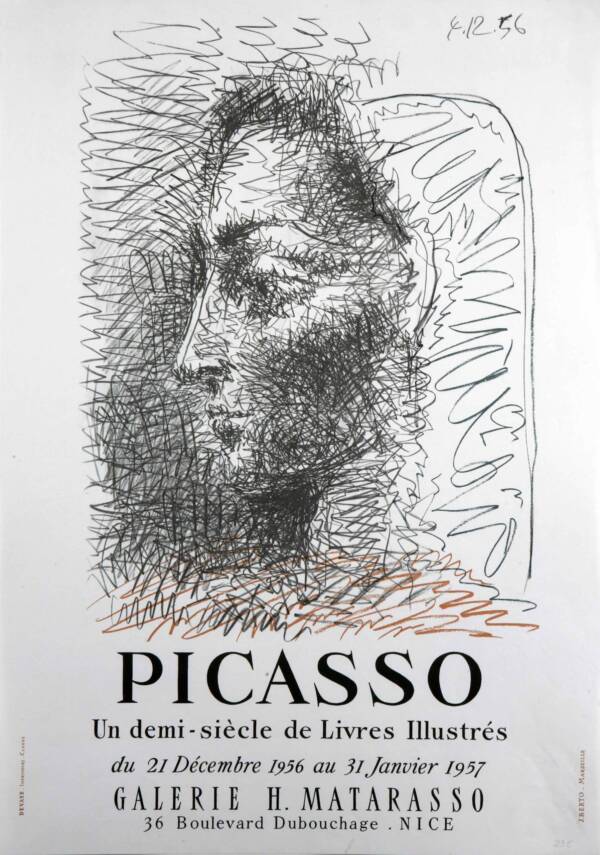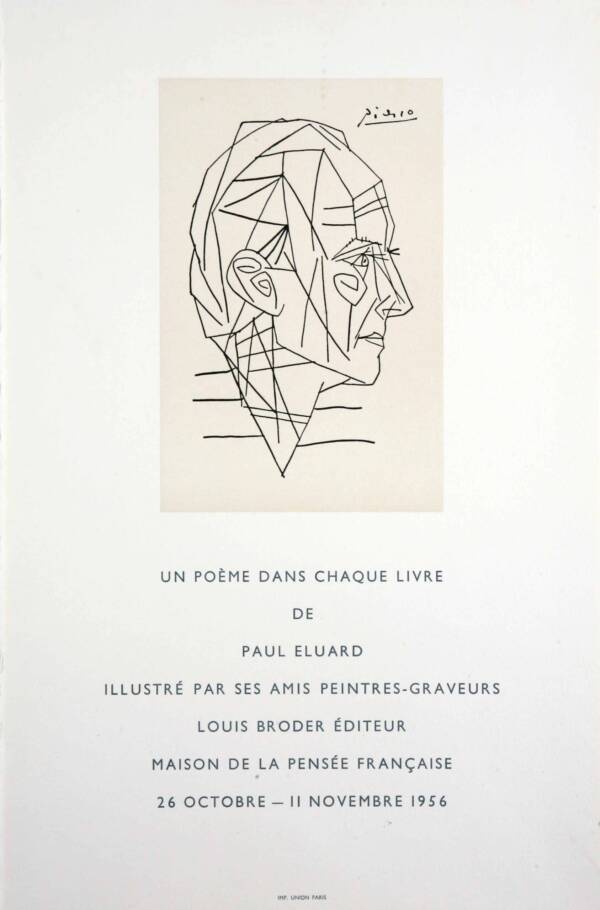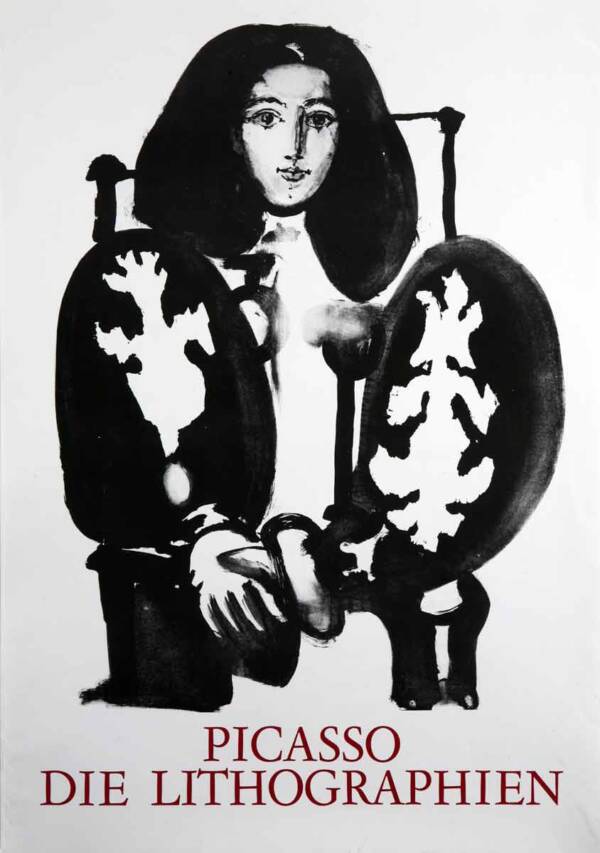Descripción
This poster was designed by Mourlot, taking as its subject the oil on canvas painting by Picasso on 7 December 1963 on the theme of “The Painter and his Model”.
Neither this poster nor its motif have been reproduced on any other posters.
Interestingly, the image reproduced is from 7 December 1963 and does not appear in the catalogue. The works on display were painted between 13 December 1961 and 20 September 1963. The binding of the catalogue also contains two drawings from 6 December 1963, both on the theme of “The Painter and his Model”. On the back cover, the model is a monkey.
The painting shows the artist, with a Picasso-like appearance, working intensely on a canvas that appears from the side, so that it is impossible for us to see what the artist has painted or is painting, while at his side, half-naked, with her breasts uncovered, the model contemplates with apparent concentration the work on the easel or the figure, whose enormous head appears in the foreground and more or less parallel to the painting on which the painter is working, who attentively observes his model. Taking advantage of the chiaroscuro, Picasso reflects the atmosphere of the studio and highlights the features, especially the exchange of glances. Looks of encounter, of appreciation, of invitation, of creation, which he presents through his work to the spectator, the voyeur, so that he establishes the relationship with the painting.



